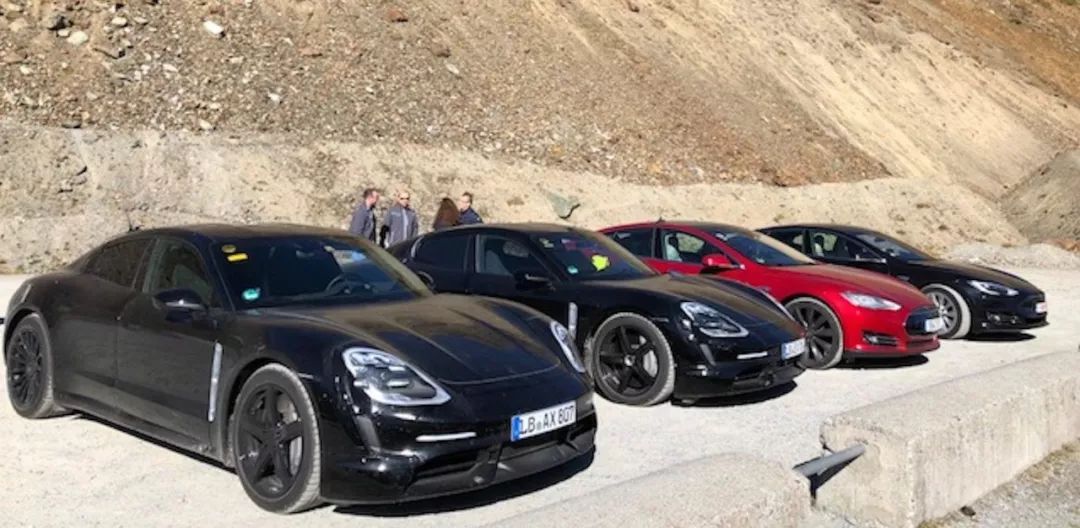On the last day of 2018, we introduced Porsche’s first pure electric car, the Taycan. Recently, Porsche invited media from around the world to test drive the Taycan prototype car undergoing extreme winter testing in Sweden, revealing more information about the Taycan and deepening our understanding of this car.
Targeting the Model S?
In the 2018 article “Porsche Taycan is coming“, we believe that the Porsche Taycan is the most sincere pure electric vehicle launched in the traditional luxury brand lineup.
From the sales strategy last year, the Taycan fully benchmarked the Tesla Model S in terms of product positioning. One small “evidence” captured by the media at the time of the Taycan prototype test was that two Model S vehicles were parked alongside as benchmark tests.
Another small detail on the Chinese website is that when you type “Model S” on Baidu, the first link is Porsche China’s official website for Taycan pre-orders.
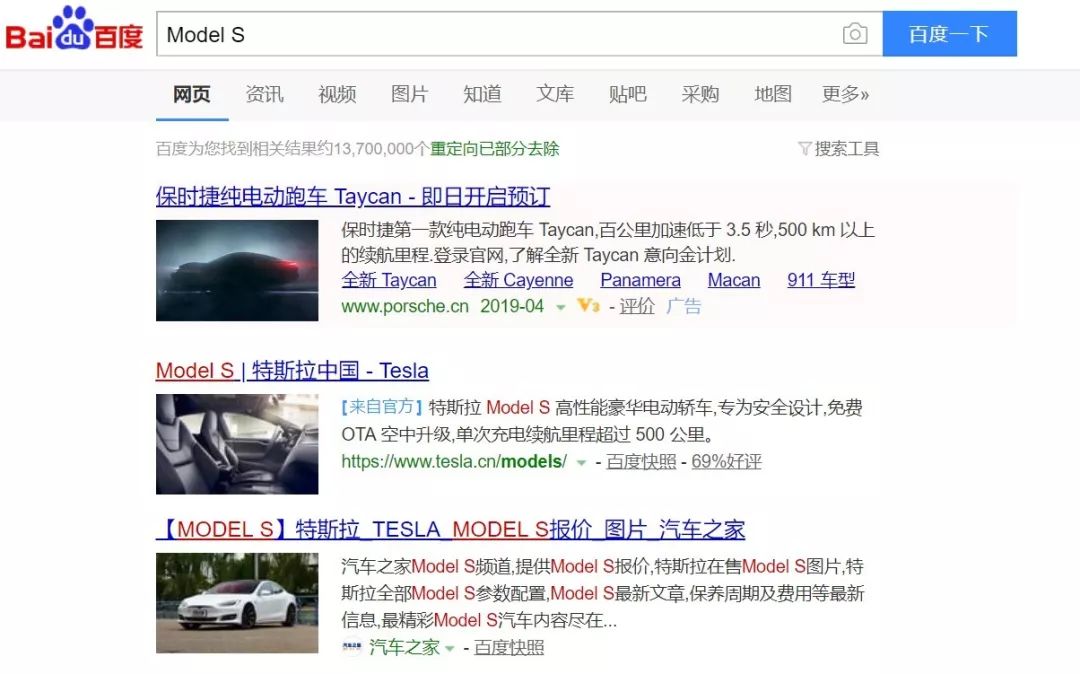
However, as the Taycan began to accept media test drives, more details were revealed. Increasing evidence suggests that the Taycan and Model S may not be in the same level.
Andrew Frankel, editor of Whichcar, describes the size of the Taycan as follows.The first surprise is how small the Taycan feels. No official dimensions have yet been issued, but based on what is known from the Mission E concept from which it is derived, the car is around 4.85 metres long, compared to well over five metres for the Panamera. Its wheelbase is far shorter too.
Norwegian electric car magazine “elbil24” editor Fred Magne Skillebæk wrote: “The first thing that strikes me is the form factor, which I can best describe as a 911 Plus, almost like a stretched 911 with four doors. Taycan should not be compared to a Panamera, which is much larger.”
We won’t mention the wheelbase here, let’s list the sizes of these cars. The 2019 911 is only 4519mm long, how long can the four-door version of the 911 be?If we go by 4850 mm, we find that the Taycan is actually between the Model 3 and Model S, with the Model 3 measuring 4694 mm and the Model S measuring 4970 mm in length. The 2019 Audi A4L is 4818 mm long, and the Taycan is slightly larger than the A4L.
From this perspective, the Taycan is not directly competitive with the Model S. However, Porsche managed to fit a 90 kWh battery pack into such a small car (don’t forget that Whichcar says its wheelbase is “much smaller”), thanks to it being a pure electric car developed on an all-new platform that Porsche internally calls J1. We mentioned this last year; the Audi e-tron GT, Bentley, and Lamborghini’s first pure electric sports cars will all be based on the J1 platform.
However, other information suggests that the J1 platform’s own level of advancement is questionable. It is widely known that Porsche is simultaneously developing three pure electric platforms, namely J1, PPE, and SPE. As mentioned, we won’t go into detail on J1 again. PPE, or Premium Platform Electric, is the next-generation pure electric luxury car platform developed jointly by Porsche and Audi.
SPE, or Sports Platform Electric, is the next-generation electric supercar platform independently developed by Porsche. The first car using this platform won’t hit the market until after 2025, so we won’t delve into it here. The main point is PPE, which is more advanced than J1. Porsche and Audi have respectively invested 300 and 550 engineers in developing PPE, which will be compatible with multiple strategic car models including sedans and SUVs of varying sizes. This includes the pure electric Porsche Macan originally planned for release in 2021.
On January 24, 2019, PPE suffered a setback when German Manager Magazin reported that Porsche and Audi engineers had to modify it after reverse engineering and cost analysis of Tesla’s Model 3 showed that the latter had exceeded their original expectations.> Porsche and Audi engineers had to improve the PPE platform as the Tesla Model 3 proved to be better than they had imagined.
The all-electric Porsche Macan is therefore postponed for half a year and will be launched in Q1 2022.
If the next-generation PPE platform is rebuilt due to the Model 3, how much better can the Taycan, based on the J1 platform, be?
The bad news continues: as an all-electric car with a size between Model 3 and Model S, the Taycan’s curb weight is over 2 tons. The battery pack weighs “less than 700kg”, and based on a battery pack specification of 90kWh and a weight of 600-700kg, its battery energy density is only 129-150 Wh/kg. Its low energy density is consistent with our prediction in “Porsche Taycan Is Coming”.
So, do you think it can beat the Model S?
“This is a Porsche”
Now, let’s talk about how Porsche views electric vehicles and how Porsche shapes the Taycan.
Our goal is to always be the champion in this segment no matter how the powertrain develops. Our first fully electric sports car will be a true Porsche offering all of the renowned driving pleasures our customers expect from us today in a performance-based and practical package.
This is a statement from Klaus Zellmer, Porsche North America CEO. As we read on, we will have a deeper understanding of this statement.
Below is a list of some of the performances of the Taycan Turbo (top-end).
-
Acceleration from 0 to 100 km/h in less than 3.5 seconds
-
Battery pack specification: 90 kWh
-
Top speed over 250 km/h
-
An NEDC-rated range of over 500 km
-
800V ultra-fast charging: 4 minutes’ charging for 100 km of driving
-
20 minutes’ charging time for 80% of the battery pack.From the data point of view, Taycan Turbo loses to the Model S P100D released three years ago in terms of battery pack specifications, endurance, and acceleration per 100 kilometers. However, Porsche has successfully differentiated itself from Tesla.
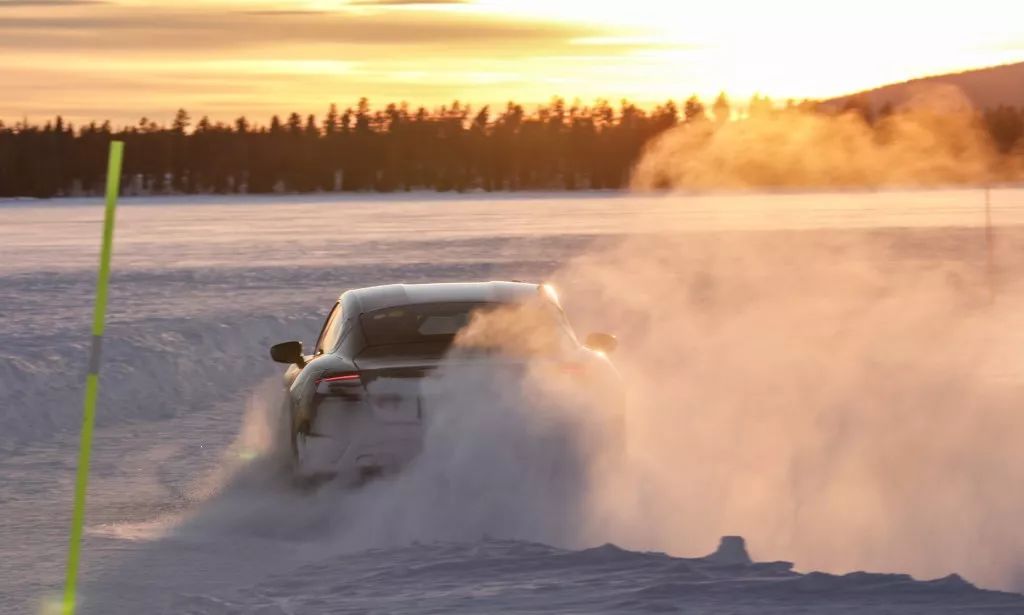
Porsche admits that when it comes to making sports cars, no one does it better than Porsche; making pure electric cars is not that complicated either, but making the world’s best pure electric sports cars requires overcoming some challenges.
Porsche’s brand proposition is handling and sportiness. Therefore, a 50:50 weight distribution ratio and ultra-low center of gravity design are necessary, but in the era of pure electric cars, there is not much technical threshold to that.
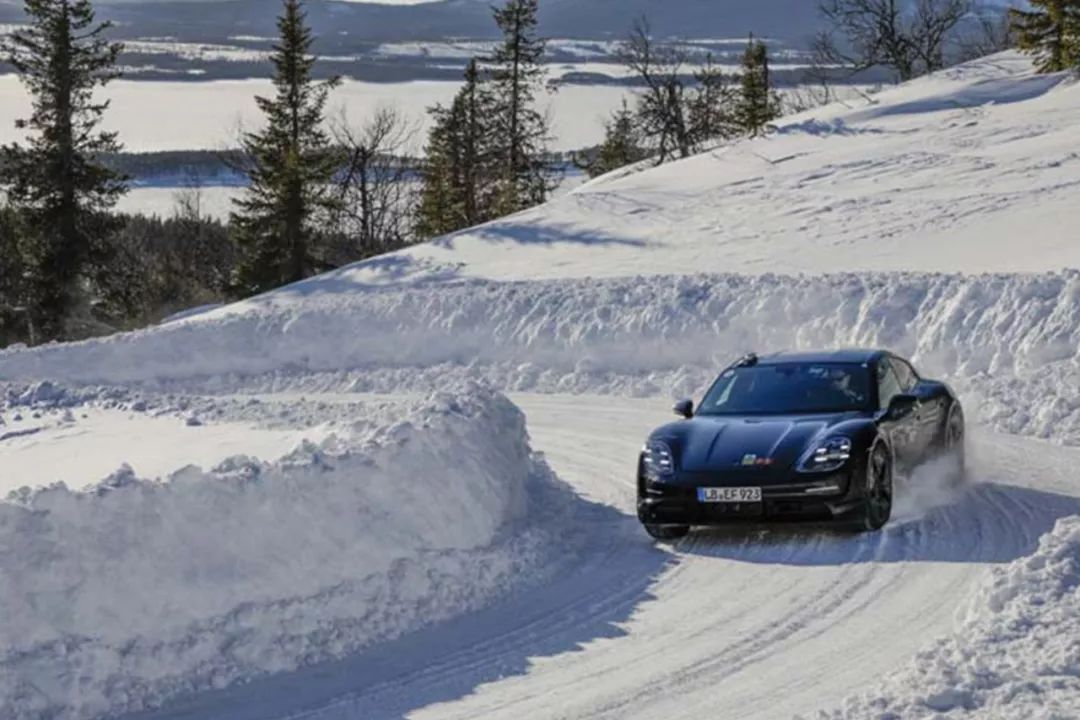
This is what truly embodies Porsche’s handling and sportiness proposition: Taycan has abandoned the “one-pedal driving” function that many competitors have received high praise for.
The so-called “one-pedal driving” allows pure electric vehicles to immediately start energy recovery and drive the motor to charge the battery pack and gradually stop the car when the right foot is lifted off the accelerator pedal. The intensity of regenerative braking can be adjusted. When adjusted to strong regenerative mode, the braking force can cope with most deceleration and stopping needs.
Outside of an emergency stop, the driver does not need to switch between the brake and accelerator pedals, achieving all control actions with a single pedal. Similar functions are provided by BMW i3, Nissan Leaf, and Tesla.
The operating logic of Taycan is that in the default mode, when you lift off the accelerator pedal, the vehicle will not produce any braking force. It will be in a gliding state, just like a fuel-powered car. Braking must be done by pressing the brake pedal. During the braking process, the first half uses regenerative braking to provide the braking force, and the second half uses the actual brake calipers to apply force.
We trust the user’s intuition. When they want to stop, they should step on the brake pedal.
Taycan platform director Bernd Propfe said. Porsche finely tuned the transition between the two braking systems through line control. According to Propfe’s statement, Taycan’s braking system is similar to the Acura NSX, and users cannot feel the system’s transformation.
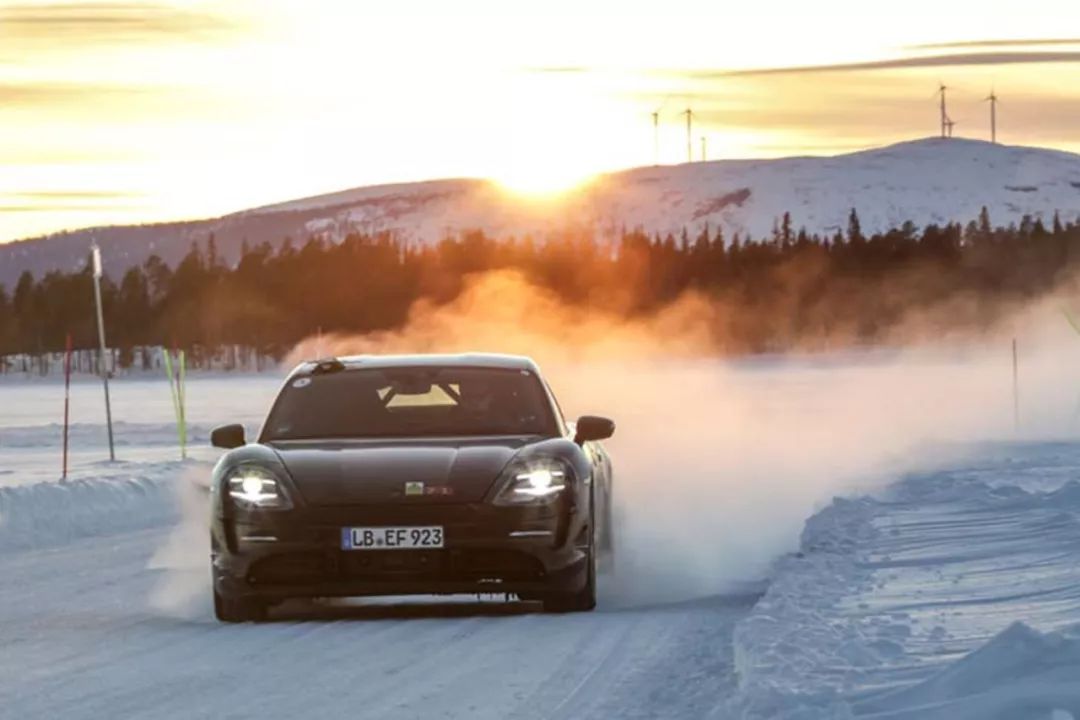 Apart from that, Porsche tire engineer Benjamin Gehring is looking for tires with different sizes and composite materials to ensure the best grip and stability of Taycan.
Apart from that, Porsche tire engineer Benjamin Gehring is looking for tires with different sizes and composite materials to ensure the best grip and stability of Taycan.
Taycan supports four-wheel steering, and Porsche has equipped Taycan with Porsche Dynamic Chassis Control (PDCC), Porsche Active Suspension Management (PASM), and Porsche Stability Management (PSM). Porsche pushed Taycan to drive violently on the ice to test its stability.
When the car loses grip, PSM will greatly reduce the power output and brake automatically to keep the car stable.
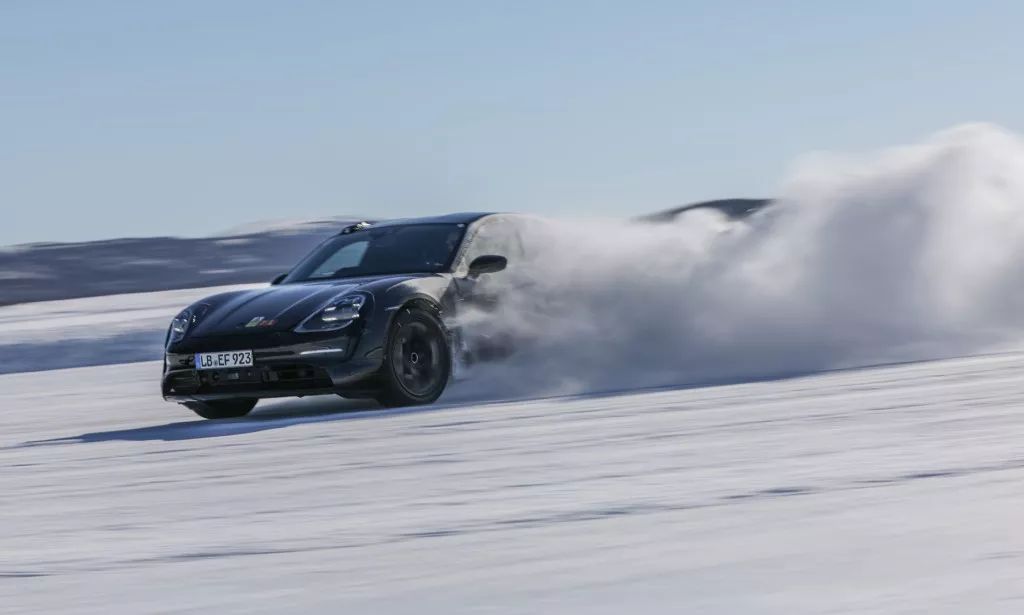
Finally, Porsche has developed a brand new Sport Plus mode for the Taycan all-wheel drive model.
In the all-wheel drive model, there is no restriction on how power should be output, and you can freely place the power on the front or rear wheels, which is impossible for internal combustion engines.
Meanwhile, PDCC, PASM, and PSM will automatically turn off, and Taycan will become a drifting monster on the ice. Responsive and precise.
Sustainable High Performance
Taycan also has two unique features.
- Acceleration 0-100 km/h remains consistently high for 12 consecutive times
- Acceleration 0-200 km/h remains consistently high for at least 4 times
What do these two indicators mean? There is a saying about Taycan’s sustainable high performance.
It will maintain its top speed for longer than you could drive at that speed on any public road.
The range of Taycan’s sustainable driving at the top speed exceeds the length of any public road where driving at that speed is allowed.
This sentence is a bit complicated, try to feel it.
Stefan Weckbach, Vice President of Porsche’s Pure Electric Product Line, once mentioned that Taycan is committed to achieving consistent and sustainable high performance, and the battery pack will always be in the ideal temperature range.
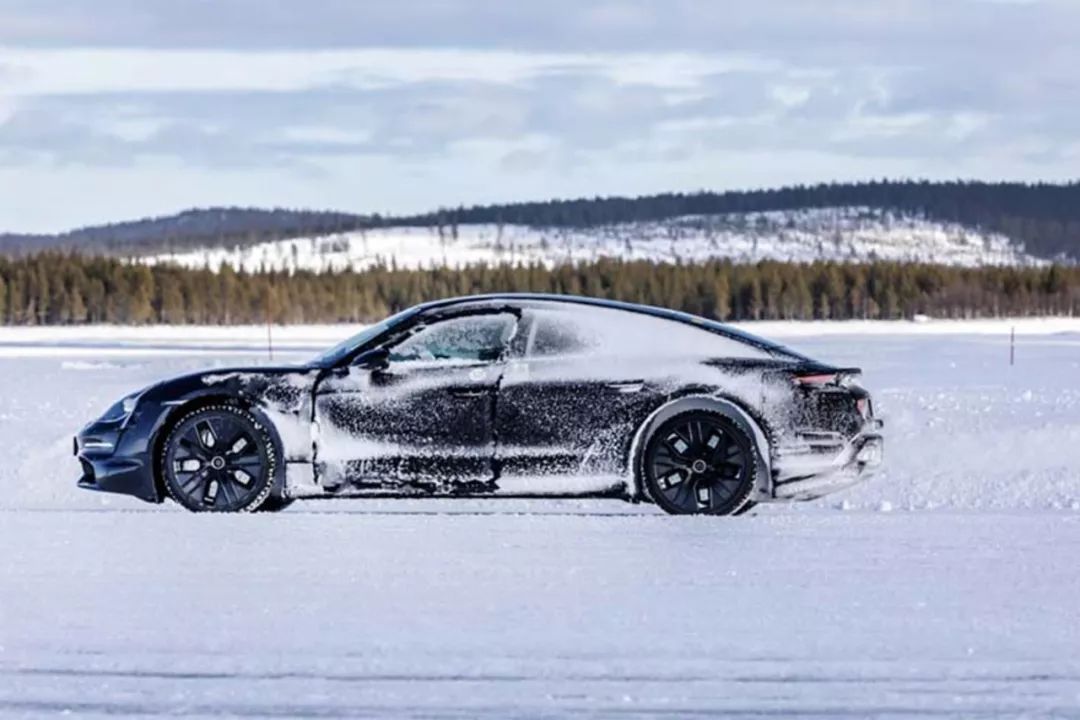 This is exactly where Tesla is weak. The goal of Taycan is to provide stronger sustainable high-speed driving capability than Model S P100D. Why doesn’t Tesla sell well in Germany, where it performs well in China?
This is exactly where Tesla is weak. The goal of Taycan is to provide stronger sustainable high-speed driving capability than Model S P100D. Why doesn’t Tesla sell well in Germany, where it performs well in China?
Because more than half of the highway sections in Germany have no speed limit, and pure electric vehicles lose power in the second half of acceleration, and sustainable high-speed driving requires the battery pack to have sustainable high-spec discharge capabilities.
To solve this problem, Porsche did three things. The first is optimization at the motor level. Otmar Bitsche, Director of Porsche Electronics and Electrical Development, has three evaluations of Taycan’s permanent magnet motor:
-
Impressive power-to-weight ratio, i.e. low weight and high power
-
Ultra-high torque
-
Sustainable high performance
The second is optimization at the electrical control level. Rapid depletion of power will cause the battery temperature to rise rapidly. Porsche has developed the TMS battery temperature control system (Termal Management System) for Taycan. Propfe explained that TMS is Taycan’s most important configuration, which is one of Porsche’s most important advantages.
The third is the Taycan two-speed gearbox. We know that permanent magnet motors have the risk of demagnetization at high speeds. How did Porsche solve this problem? The answer is the two-speed gearbox.
We know that the entire Tesla series has a single-speed gearbox. This is determined by the characteristics of the motor, where high-performance motors can operate continuously at high speeds above 10,000 rpm, and maximum output power can also be maintained in a wide range of speed intervals.
In fact, Tesla once tried to equip Roadster with a two-speed gearbox, but gave up due to its low reliability and turned to the research and development of high-performance motors.
But in the field of gearboxes, Porsche’s technical accumulation crushes Tesla without any difficulty. Porsche’s PDK dual-clutch gearbox is a unique existence in the field of fuel-powered cars, let alone a two-speed gearbox with greatly reduced complexity.
Through motor, TMS temperature control, and two-speed gearbox, Porsche makes Taycan’s “sustainable high performance” more feasible.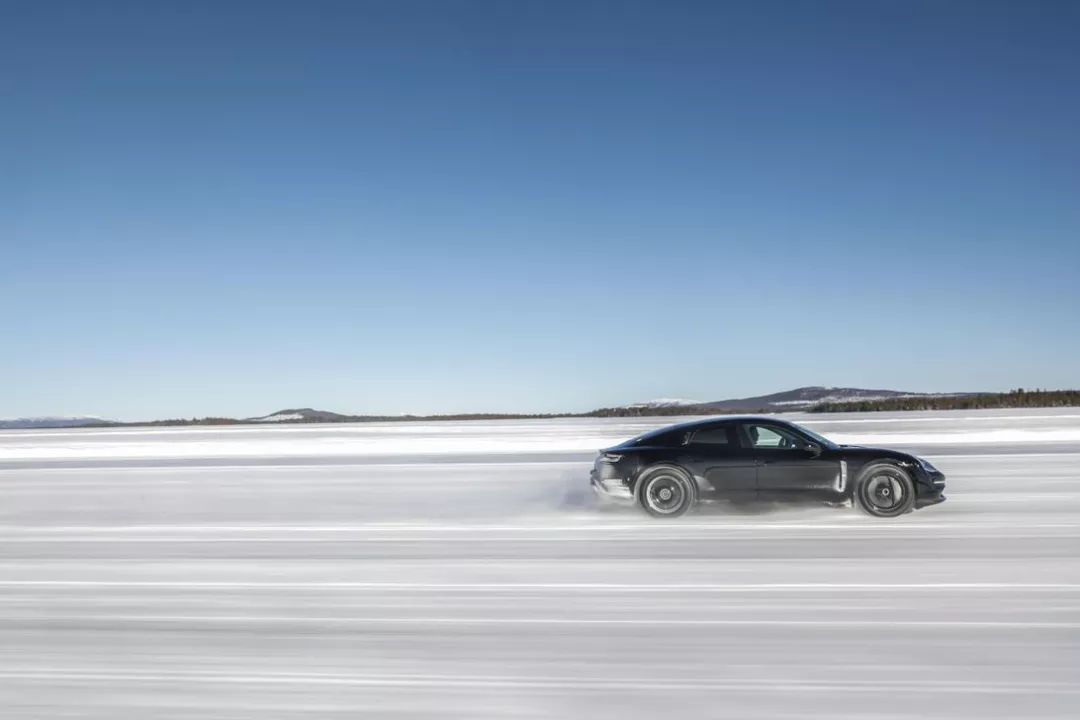
Finally, I’d like to talk about Porsche’s strategy to take on Tesla. Since 2008, Tesla has been working with Panasonic to invest in the three-electric field and has gradually built a shallow technical moat. When Tesla entered the luxury car market with Model S/X/3/Y, most luxury brands were at a loss when faced with such opponents. From the first pure electric car of BBA, this point is particularly evident.
Only Porsche, without rushing for the debut and without chaos, on the one hand, invests on a large scale, including 800V ultra-high-pressure fast charging, TMS and other configurations to solve user pain points as far as possible; on the other hand, it emphasizes its sports genes and makes Porsche itself with better handling and sustainable high performance, rather than Tesla.
Tesla has already developed a similar Sport Plus mode for the Model 3, and this mode is likely to be applied to the new Model S. Porsche’s advantage in sports will not last too long.
But at least for today, Porsche has made people ignore that the performance of Taycan is inferior to that of Model S, and Porsche is trying to convey to people that Taycan is the world’s first pure electric sports car with sports genes.



This article is a translation by ChatGPT of a Chinese report from 42HOW. If you have any questions about it, please email bd@42how.com.
